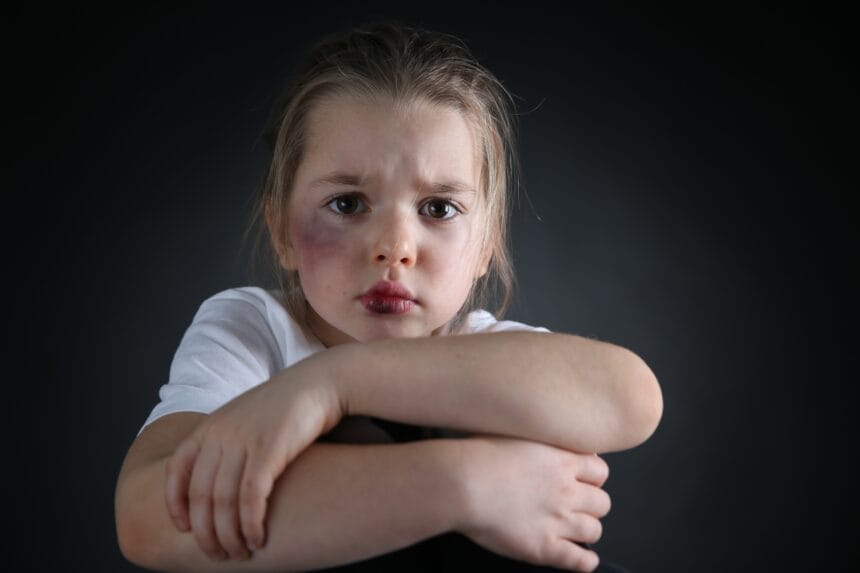Child abuse remains one of society’s most pressing challenges, affecting millions of children worldwide. Recent statistics indicate that approximately 1 in 7 children experience abuse or neglect in the United States alone. These staggering figures illustrate not only the prevalence of child abuse but also its far-reaching consequences. While child abuse manifests in various forms—physical, emotional, sexual, and neglect—it leaves scars that can persist throughout a person’s life, impacting their health and well-being.
This blog aims to explore the intersection of child abuse and public health, shedding light on how the effects of abuse ripple through communities and healthcare systems. By understanding these dynamics, we can advocate for a coordinated response that addresses the immediate and long-term impacts of child abuse, ultimately paving the way for healthier futures for our children.
II. Understanding Child Abuse
Based on vdlegal, child abuse can be defined as any action or lack of action that endangers a child’s physical or emotional well-being. This abuse encompasses various forms, including physical harm, emotional maltreatment, sexual exploitation, and neglect. Each type of abuse presents unique challenges, requiring different interventions and support systems to effectively address them. Recognizing these forms is crucial for parents, educators, and healthcare professionals in identifying at-risk children.
Several risk factors contribute to the prevalence of child abuse, including parental stress, substance abuse, and socio-economic challenges. Families experiencing financial hardships or social isolation are more likely to encounter situations where abuse can occur. Furthermore, children with disabilities or those from marginalized communities often face increased vulnerability. Understanding these risk factors helps to tailor prevention strategies and interventions, ensuring that support reaches those who need it most.
III. The Public Health Perspective
The health consequences of child abuse extend far beyond immediate physical injuries. Survivors of abuse often grapple with long-term effects on their mental health, including anxiety, depression, and post-traumatic stress disorder (PTSD). Studies have shown that childhood trauma can lead to chronic health conditions in adulthood, such as heart disease, diabetes, and obesity. The connection between early trauma and later health outcomes underscores the urgency of addressing child abuse as a critical public health issue.
Moreover, child abuse imposes significant societal costs that extend to public health systems and communities. Healthcare providers often encounter survivors of abuse in their practices, leading to increased healthcare utilization and associated costs. The economic burden of child abuse is staggering, with estimates indicating that it costs the United States billions of dollars each year in healthcare, legal proceedings, and lost productivity. Recognizing this impact is essential for shaping policies and programs that prioritize prevention and intervention efforts.
IV. The Need for Action
Healthcare professionals play a pivotal role in identifying and addressing child abuse. Their unique position allows them to recognize warning signs during routine examinations or consultations. However, many healthcare providers lack adequate training to detect abuse effectively. By implementing training programs and equipping professionals with the tools they need, we can enhance their ability to identify and report suspected cases of child abuse. This proactive approach not only protects vulnerable children but also fosters a culture of awareness within the healthcare community.
Community involvement is equally vital in the fight against child abuse. Support systems and programs can empower parents and caregivers, providing them with resources to cope with stress and challenges. Successful initiatives, such as parenting workshops and community outreach programs, have proven effective in preventing child abuse. By fostering open conversations and building supportive networks, we can create an environment that prioritizes child safety and well-being.
V. Policy Recommendations
To effectively combat child abuse, we must advocate for stronger laws and policies that protect children. Legislative changes are crucial in ensuring that child protective services receive adequate funding and resources to investigate and respond to abuse cases. Policymakers must prioritize the development of comprehensive child welfare programs that address the underlying causes of abuse, such as poverty and substance abuse. By investing in preventive measures, we can reduce the incidence of child abuse and its associated health impacts.
In addition to legislative changes, public awareness campaigns play a vital role in addressing child abuse. Educating communities about the signs of abuse and the importance of reporting can help create a culture of vigilance and support. Schools, healthcare facilities, and community organizations can collaborate to develop programs that raise awareness and provide resources for parents and caregivers. Together, we can cultivate an informed public that actively participates in the protection of children from abuse.
VI. Conclusion
Child abuse is a complex issue that profoundly impacts public health, highlighting the need for immediate action. By understanding the various forms of child abuse, its health consequences, and the societal costs, we can advocate for effective interventions and policies that protect children. Healthcare professionals, communities, and policymakers must work together to create a comprehensive response to child abuse, addressing both prevention and intervention.
As individuals, we have the power to make a difference. Whether through advocacy, volunteering, or simply spreading awareness, we can contribute to a culture that prioritizes child safety and well-being. It is time for us to take action and ensure that every child has the opportunity to grow up in a safe and nurturing environment. By working collectively, we can break the cycle of abuse and promote a healthier future for all children.







